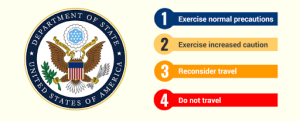Martin Luther King Jr.’s Civil Rights Dream at 40
When we allow freedom to ring, when we let it ring from every village and every hamlet, from every state and every city, we will be able to speed up that day when all God’s children—black men and white men, Jews and Gentiles, Protestants and Catholics—will be able to join hands and sing in the words of that old Negro spiritual: ‘Free at last! Free at last! Thank God Almighty, we are free at last!"
King, the son of an Atlanta pastor, was born in 1929. He became an ordained Baptist minister at the age of 19. In 1955, shortly after civil rights activist Rosa Parks refused to obey Montgomery, Alabama rules mandating segregation on buses, King led black residents in a bus boycott.
King soon gained national fame for his extraordinary oratorical skills, and for his courage. In the spring of 1963, he led mass demonstrations in Birmingham, Alabama, where local white police officials opposed integration. Violent clashes between unarmed black demonstrators and police armed with dogs and fire hoses generated newspaper headlines throughout the world.
His message, however, was not confrontational, but instead emphasized racial reconciliation through non-violent means. This theme was at the core of his "I have a dream" speech.
King was speaking directly to the 250,000 people, black and white, gathered on the Washington Mall that sweltering day 40 years ago. Perhaps more importantly, however, he knew he was also addressing the millions of people, most of them white, who were watching the speech live on television.
"He created a reasonable argument that [white] Americans could embrace," said Haynes. "He appealed to those Americans who didn’t see segregation as a major problem, but still thought it was unfair," said Haynes.
Ulysses Jenkins, another UC Irvine professor, who teaches African-American studies, says King had to convince white people of the benefits of racial reconciliation.
"Whites feared that they had something to lose from racial equality," said Jenkins. "King had to show them they would gain something from it."
The strong religious underpinning of King’s message, with its references to redemption and forgiveness, resonated with white Christians. King’s speech also tapped into America’s political soul. He said the ideals of American democracy had not been realized until there was racial reconciliation.
"His message was larger than civil rights," said Clayborne Carson, director of the Martin Luther King, Jr. Papers Project at Stanford University in Palo Alto. "King was fighting for justice."
But the speech also served as a warning.
"King wanted people to act," said Carson, who was 19 years old when he attended the march. "The underlying message was clear: As long as there was no change, the demonstrations would continue."
| Launch in external player |

